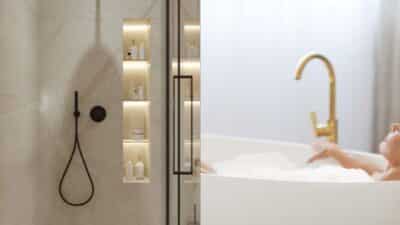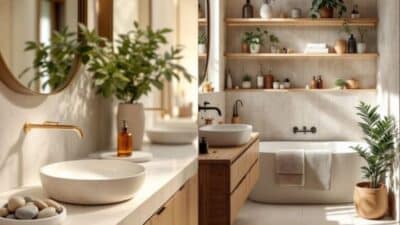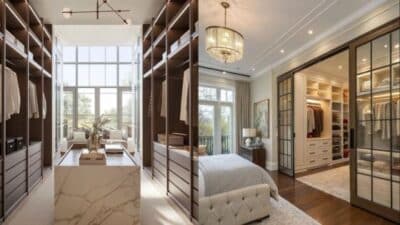Industrial furniture design blends raw materials, minimalist forms, and robust construction to create pieces that are both functional and visually striking. This style takes inspiration from old factories and industrial spaces, emphasizing exposed metal, reclaimed wood, and utilitarian elements to deliver a modern yet timeless aesthetic for your home or business. Its appeal lies in durability, versatility, and the ability to bring character and authenticity into any environment.
Industrial design is perfect if you appreciate settings where practicality and beauty intersect. Whether you’re furnishing a loft, updating your office, or adding edge to your living room, industrial furniture offers flexible options that fit a variety of spaces and design goals.
Key Takeaways
- Industrial furniture design features raw materials and utility.
- The core elements are durability, simplicity, and function.
- This aesthetic works in various spaces for a distinctive modern edge.
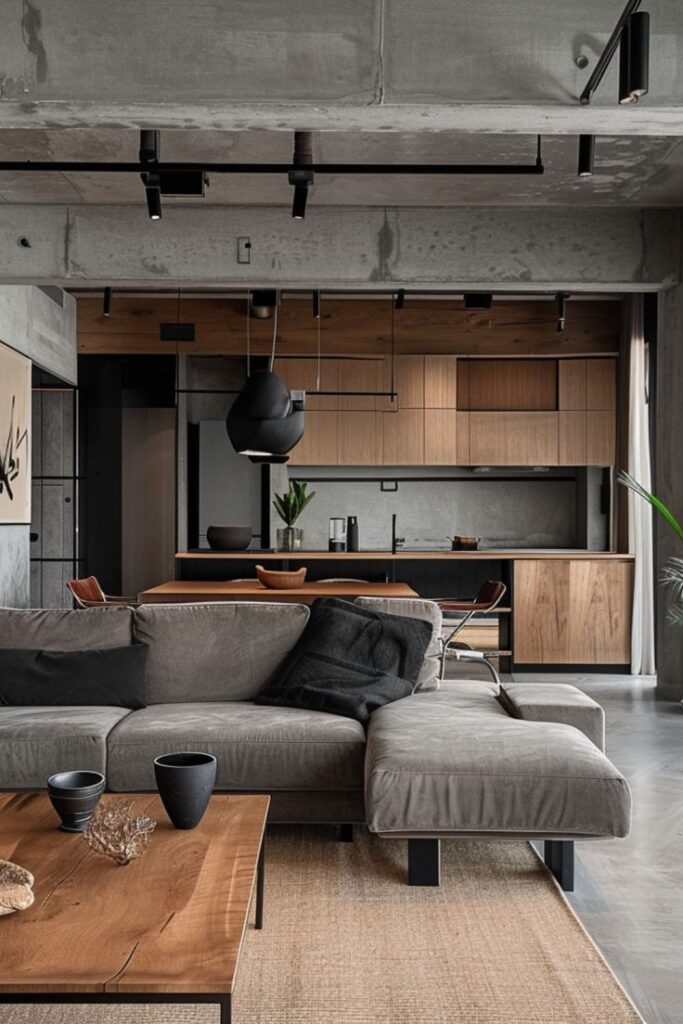
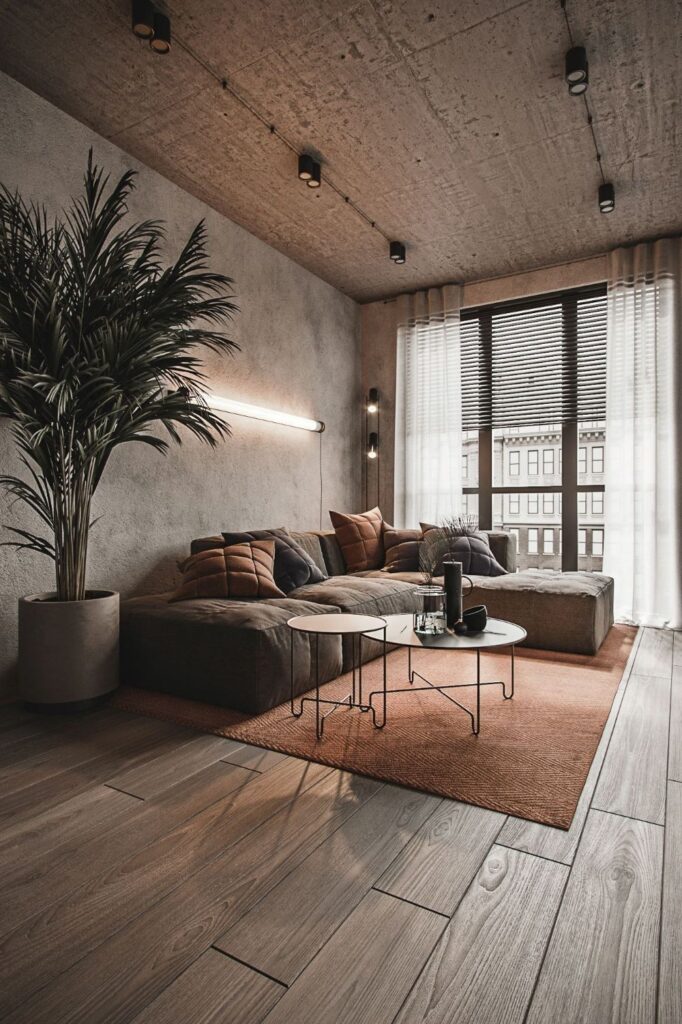
Defining Furniture Industrial Design
Industrial furniture design blends raw materials and utilitarian forms, resulting in pieces that value both function and aesthetics. This design approach draws from manufacturing history and adapts influences from factories, warehouses, and early mass production techniques.
Origins and Influences
Industrial furniture design began in the late 19th century, as manufacturing methods advanced during the Industrial Revolution. Factories and warehouses shaped both the raw look and practical function of these pieces. Items like metal stools, workbenches, and storage cabinets were built for durability, not style.
You see elements such as steel, iron, reclaimed wood, rivets, and exposed hardware. These were chosen strictly for their ruggedness and utility in harsh environments. Their authenticity lies in their honest materials and straightforward construction.
Over time, designers repurposed these robust forms for homes, creating what’s known as “industrial chic”—a style that highlights the beauty in unrefined details and weathered finishes. Industrial spaces often incorporate open plans, visible pipes, and beams, echoing factory origins.
Key Principles of Industrial Design
Focus on simplicity and utility forms the core of industrial furniture. Form follows function—every detail has a purpose, often with minimal ornamentation. Clean lines, geometric shapes, and exposed structural elements are central.
Materials commonly found in industrial-style furniture include:
- Steel, iron, and aluminum
- Reclaimed or unfinished wood
- Concrete and raw stone
- Leather and worn textiles
These pieces typically display visible welding, screws, or fittings, creating an honest, unpolished look. Neutral colors like gray, black, brown, and muted earth tones support the understated palette.
Modularity and adaptability also make industrial furniture well-suited for lofts and open layouts. Adjustable tables, rolling carts, and mobile shelving units echo the flexible attitude of early industrial spaces.
The Impact of the Industrial Revolution
The Industrial Revolution was a turning point for furniture design. Traditional craftsmanship gave way to mass production, enabling uniform pieces that could be quickly made and transported. This shift meant that furniture was shaped less by artisans and more by machines.
Factory needs dictated the creation of sturdy, standardized pieces. As a result, the industrial style emphasizes functionality over decorativeness. Durable metals and hardwoods became the materials of choice, allowing for large-scale fabrication and year-round availability.
Your ability to recognize industrial furniture often comes from these distinctive manufacturing influences. The shift to industrial production established a visual language—utilitarian, robust, and straightforward—that remains relevant in modern interiors.
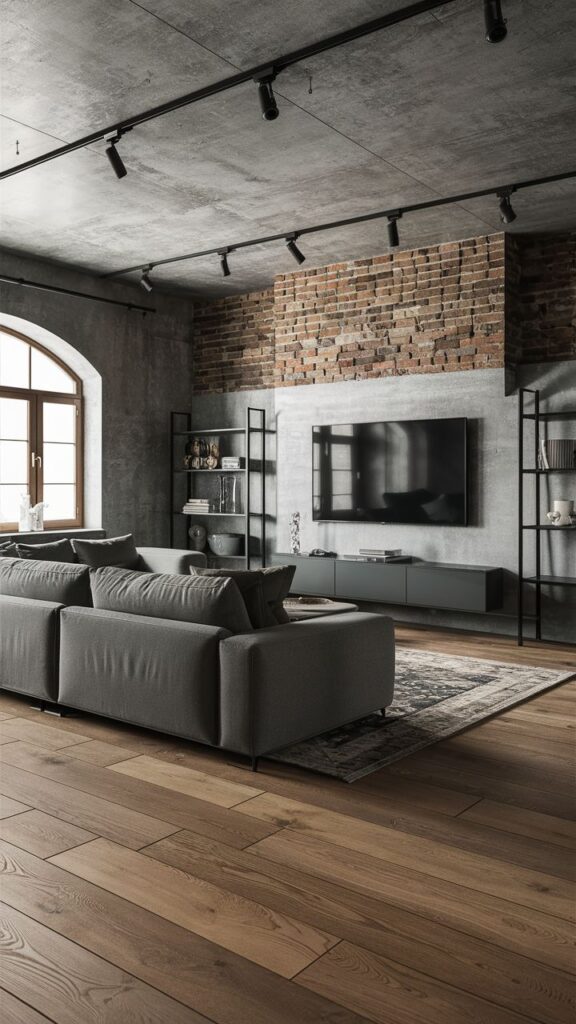
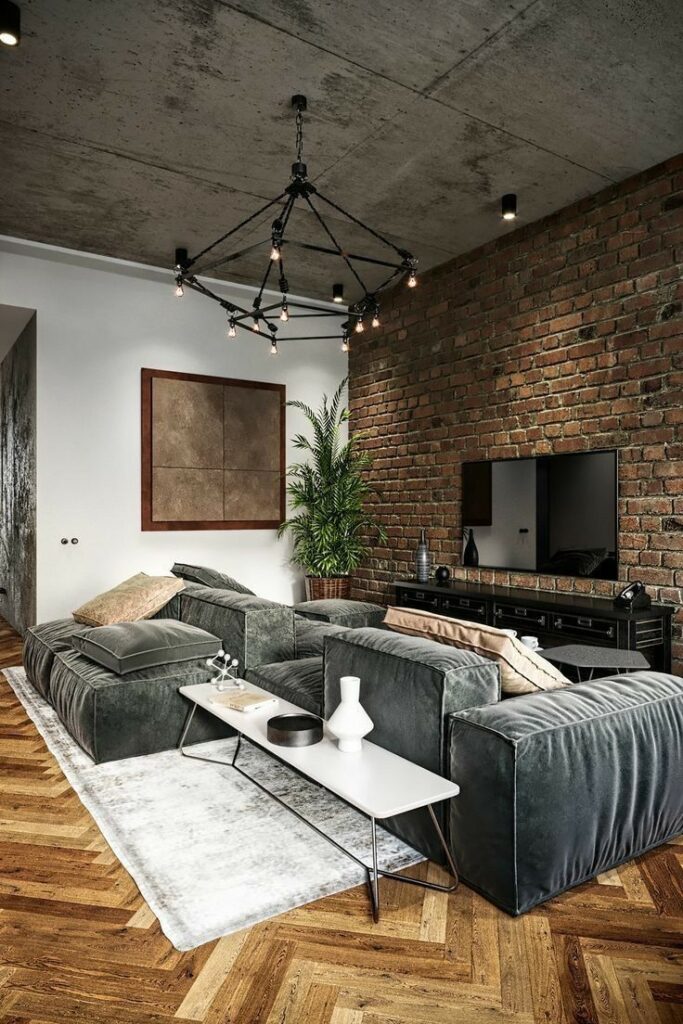
Core Elements and Materials
Industrial furniture design relies on a combination of visually raw elements and practical materials to create a distinctive, functional look. Focused on authenticity and durability, this style celebrates details often left hidden in other interior aesthetics.
Exposed Brick and Architectural Features
Exposed brick walls are a signature detail in industrial spaces, revealing the original structure of the building. If your space allows, maintaining or adding brick surfaces brings texture and history into the room. These walls don’t just add visual interest—they also speak to the industrial design’s emphasis on form following function.
You might also notice open pipes, visible ductwork, or steel beams. Rather than concealing these elements, industrial interiors highlight them as intentional design choices.
Table: Common Architectural Features
| Feature | Purpose |
|---|---|
| Exposed brick | Adds texture, warmth, and history |
| Open ductwork | Enhances industrial look, functional |
| Visible beams | Structural support, visual interest |
The combination of these features grounds your space in authenticity and contributes to the honest, unfinished look that defines industrial furniture design.
Raw Materials and Finishes
Raw materials are at the core of industrial furniture. Reclaimed wood, concrete floors, and unfinished surfaces bring authenticity to the environment. You will often find wooden tabletops with visible grain, knots, or imperfections, which help create a lived-in feel.
Concrete is widely used for floors, countertops, and even furniture bases. Its matte, gray surface provides a sturdy, low-maintenance foundation. Work with materials like weathered steel, blackened iron, and salvaged wood for a look that feels robust yet welcoming.
Use finishes that are matte or lightly distressed. Avoid shiny or polished surfaces as they run counter to the practical, honest quality valued in industrial settings.

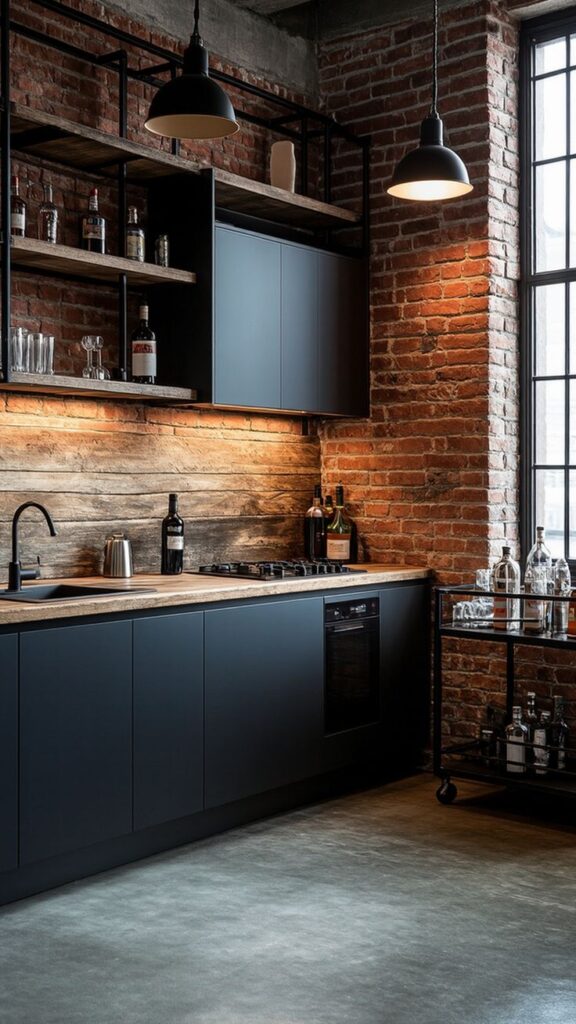
Metal Accents and Fixtures
Metal accents are essential for tying together industrial furniture designs. Common materials include iron, steel, brass, and copper. These metals appear in table legs, shelving brackets, lighting fixtures, and even as decorative gears or exposed fasteners.
Brass and copper add subtle warmth and can soften the look of cold, gray metals. Use black or gunmetal finishes for a classic industrial appearance. When selecting metal fixtures, look for functional shapes, exposed bolts, or visible welds, which reinforce the mechanical origins of the style.
Integrate hardware with visible mechanical components, such as casters or gears, to emphasize a sense of utility and craftsmanship in your furniture.


Industrial Furniture Styles and Variants
Industrial furniture offers diverse expressions, from the classic raw factory look to contemporary mixes with clean lines and softer finishes. You can use these styles to match your preferences for function, authenticity, or a more modern take on the industrial aesthetic.
Classic Industrial Style Furniture
Classic industrial style furniture is rooted in functionality and durability. You’ll notice materials like iron, steel, and reclaimed wood, often finished with visible welds or bolts. Surfaces typically show imperfections—think distressed wood or weathered metal—highlighting the utilitarian nature of these pieces.
Details such as exposed nuts, gears, and rivets are common. Designs are inspired by old factories and warehouses, with sturdy forms and minimal ornamentation. Neutral colors like gray, black, or natural wood tones dominate the palette.
Examples of classic pieces include:
- Metal locker cabinets
- Rolling carts with iron frames
- Wooden desks with steel legs
Classic industrial furniture complements urban lofts, offices, and converted warehouse spaces. It prioritizes practicality, making each item both decorative and purposeful.
Vintage and Repurposed Pieces
Vintage industrial furniture gives a second life to workbenches, factory carts, and storage units salvaged from old industrial buildings. Character comes from age, unique patina, and original hardware. You’ll often find these items at antique markets, salvage shops, or via custom makers.
Repurposed furniture transforms utilitarian objects into distinctive pieces for the home or office. For example, a set of metal filing drawers becomes a sideboard, or a reclaimed gear base may anchor a glass coffee table.
Look for these signatures:
- Visible signs of past use (marks, paint remnants, metal stamping)
- Unique forms adapted from original industrial tasks
- Restored but not over-polished finishes
These variants are popular for their authenticity and sustainable approach to furnishing a space.
Modern Industrial Aesthetic
Modern industrial furniture combines the old industrial look with contemporary form and finishes. Clean lines, smoother surfaces, and mixed materials are common. While metals and woods are still key, you may see the addition of glass, concrete, or matte finishes.
Pieces are lighter in appearance and less bulky than classic industrial items. The modern industrial chic trend emphasizes open, airy frames and subtle hardware. Colors tend toward monochrome or earth tones, with occasional bold metal elements in black or gunmetal.
Key features of the modern industrial look:
- Streamlined silhouettes
- Blended textures (e.g., wood with powder-coated metal)
- Integration of new materials without losing the industrial edge
This style can fit easily into contemporary homes and offices, offering the industrial aesthetic with updated comfort and versatility. When shopping for this style, a trusted furniture retailer can help you find pieces that balance durability with modern appeal, ensuring they fit seamlessly into both residential and commercial spaces.

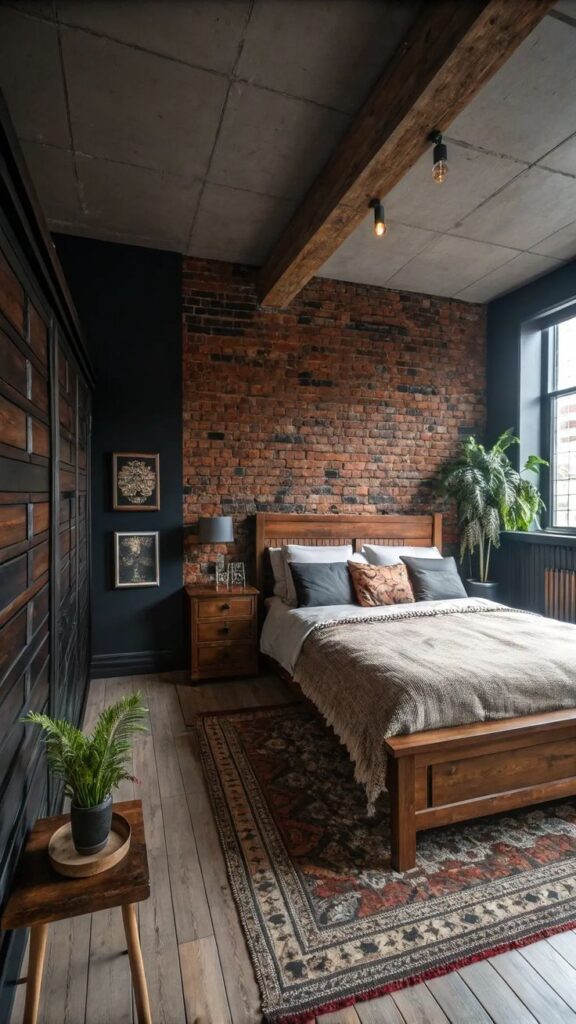
Designing Functional Industrial Spaces
Selecting the right industrial furnishings and layouts requires consideration for both practicality and aesthetics. Using robust materials and clever storage solutions enhances usability, while maintaining the hallmark style of industrial interiors.
Living Room Concepts
Focus on functional pieces such as modular sofas, reclaimed wood coffee tables, and metal shelving units. These elements ground your space and serve practical needs without crowding the area. Choose open shelving made of steel or iron for media centers and display zones, combining storage with visual appeal.
Neutral tones dominate, but pops of darker colors—like matte black fixtures—add definition. Position seating to create spacious walkways and draw attention to architectural features such as exposed beams or brickwork. Use rugs with muted patterns under furniture groupings to define gathering areas and soften the look.
Opt for minimal ornamentation to keep the environment uncluttered and organized. Integrate statement industrial lighting, such as pendant lamps with metal shades, for both task and ambient light. A short list of recommended living room features includes:
- Exposed metal frames
- Modular, low-profile seating
- Open, adjustable shelving
- Industrial-style lighting fixtures
Industrial Kitchens and Dining Areas
Industrial kitchens prioritize durability and efficiency. Stainless steel countertops, resilient stone surfaces, and open metal shelving units are staples, offering easy access to essentials while reinforcing an authentic industrial vibe.
Install home furniture with clean lines—think simple bar stools with metal legs, or dining tables crafted from reclaimed wood and welded steel supports. Use floating shelving for dishes and cookware, as this keeps necessities visible and maintains a sense of openness. Matte finishes on hardware and appliances fit the minimal, no-nonsense style.
Lighting in industrial dining areas should be direct yet warm; try rows of hanging pendants or exposed bulbs above the table for even illumination. When planning storage, rely on a mix of tall freestanding units and under-counter compartments, balancing accessibility with efficient use of space. This approach creates a kitchen and dining area that is as practical as it is visually cohesive.
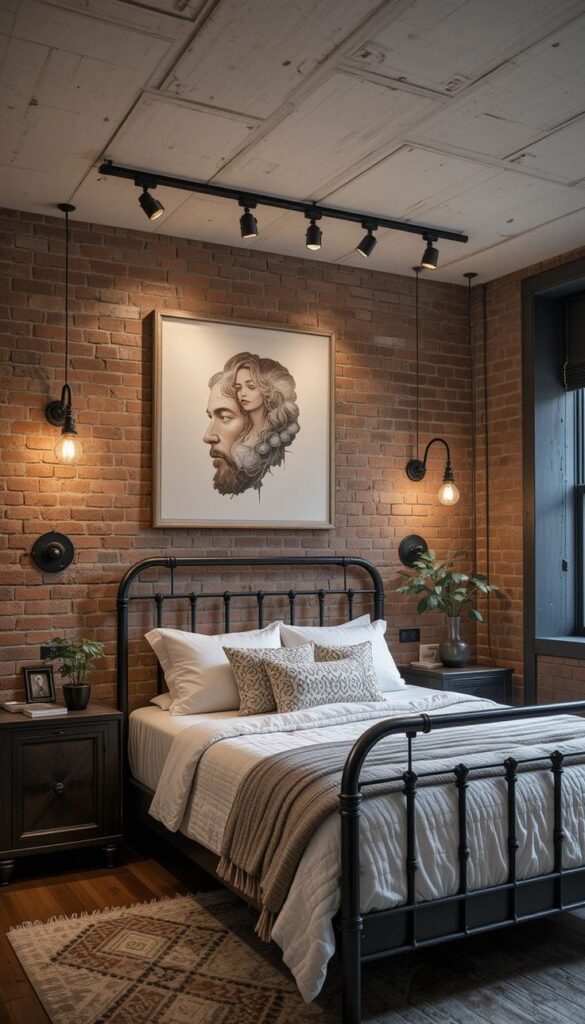
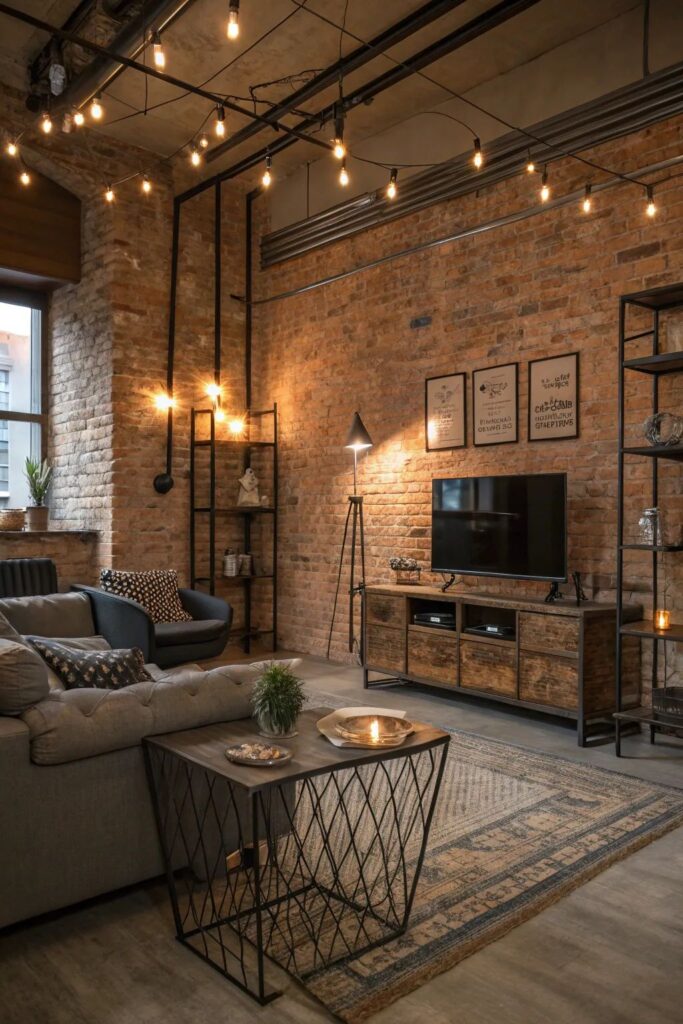
Decor and Finishing Touches
Functional decor transforms furniture industrial design into a complete environment. Choose lighting and accessories that embody raw materials and thoughtful contrasts for a balanced, practical interior.
Lighting with Edison Bulbs
Lighting is central to industrial decor, with vintage-style Edison bulbs being a distinctive choice. Their exposed filaments and warm amber glow capture the essence of early factory lighting. Use pendant fixtures, open-cage lamps, or wall sconces to showcase these bulbs.
Edison bulbs work especially well with visible wiring, black metal finishes, and concrete or wood backdrops. Installing dimmable switches adds flexibility, allowing you to adjust the atmosphere as needed. For a cohesive look, repeat the same bulb style throughout your space.
Table: Popular Industrial Lighting Features
| Feature | Example |
|---|---|
| Bulb Style | Edison Bulbs |
| Material | Metal, Glass |
| Finish | Matte Black, Brass |
| Placement | Pendants, Sconces |
Lighting is both decorative and functional, providing an authentic industrial edge.
Textiles and Comfort
Though furniture industrial design is known for sturdy materials, textiles help soften the hard edges and add comfort. Select throw pillows, blankets, and area rugs in simple patterns and muted textures. Leather, canvas, and cotton work well when paired with metal or reclaimed wood furniture.
Use fabrics with neutral or earthy tones, such as gray, tan, olive, and mustard. This approach helps maintain the industrial style but prevents the space from feeling cold or unwelcoming. Layering textiles creates warmth and invites relaxation, balancing rough materials with a softer touch.
A short list of recommended textiles:
- Leather throw pillows
- Woven cotton or wool area rugs
- Canvas or linen throws in muted colors
Adding these textiles ensures your industrial space remains inviting without sacrificing its character.
Color Palettes for Industrial Spaces
The foundation of any industrial interior is its color scheme. Stick to a neutral color palette featuring shades of gray, black, white, and taupe for walls and larger furnishings. Incorporate earthy color palettes by adding accents in rust, terracotta, olive, denim blue, or brass.
Contrast between muted walls and dark metal furniture highlights the style’s utilitarian roots. Keep bold colors minimal to let raw materials, like exposed brick or concrete, stand out. For accessories, prioritize unpolished finishes and surfaces with visible grain or patina.
A well-chosen color palette reinforces industrial design’s urban feel and complements your choice of furniture and decor.
- 80shares
- Facebook0
- Pinterest80
- Twitter0

